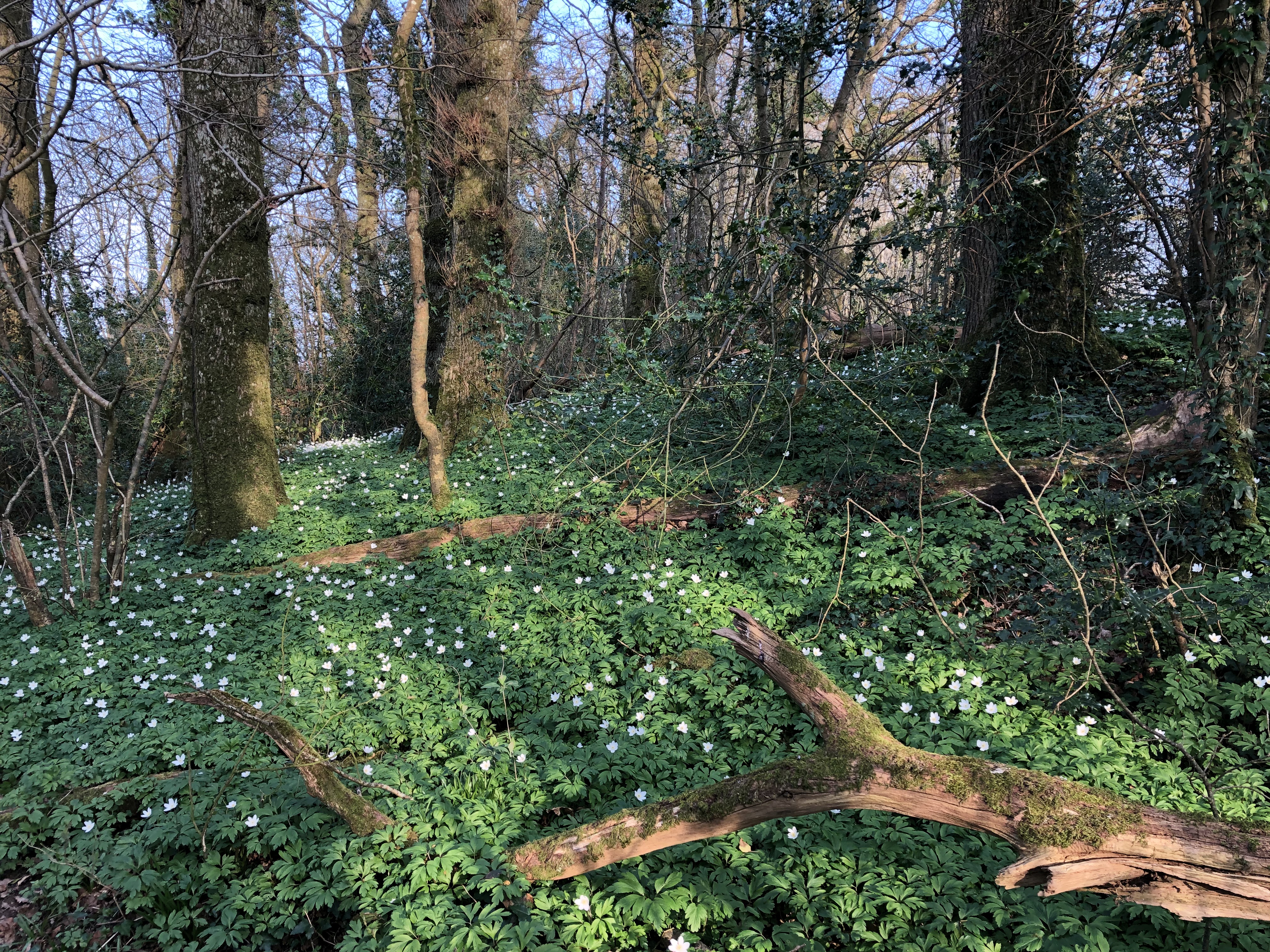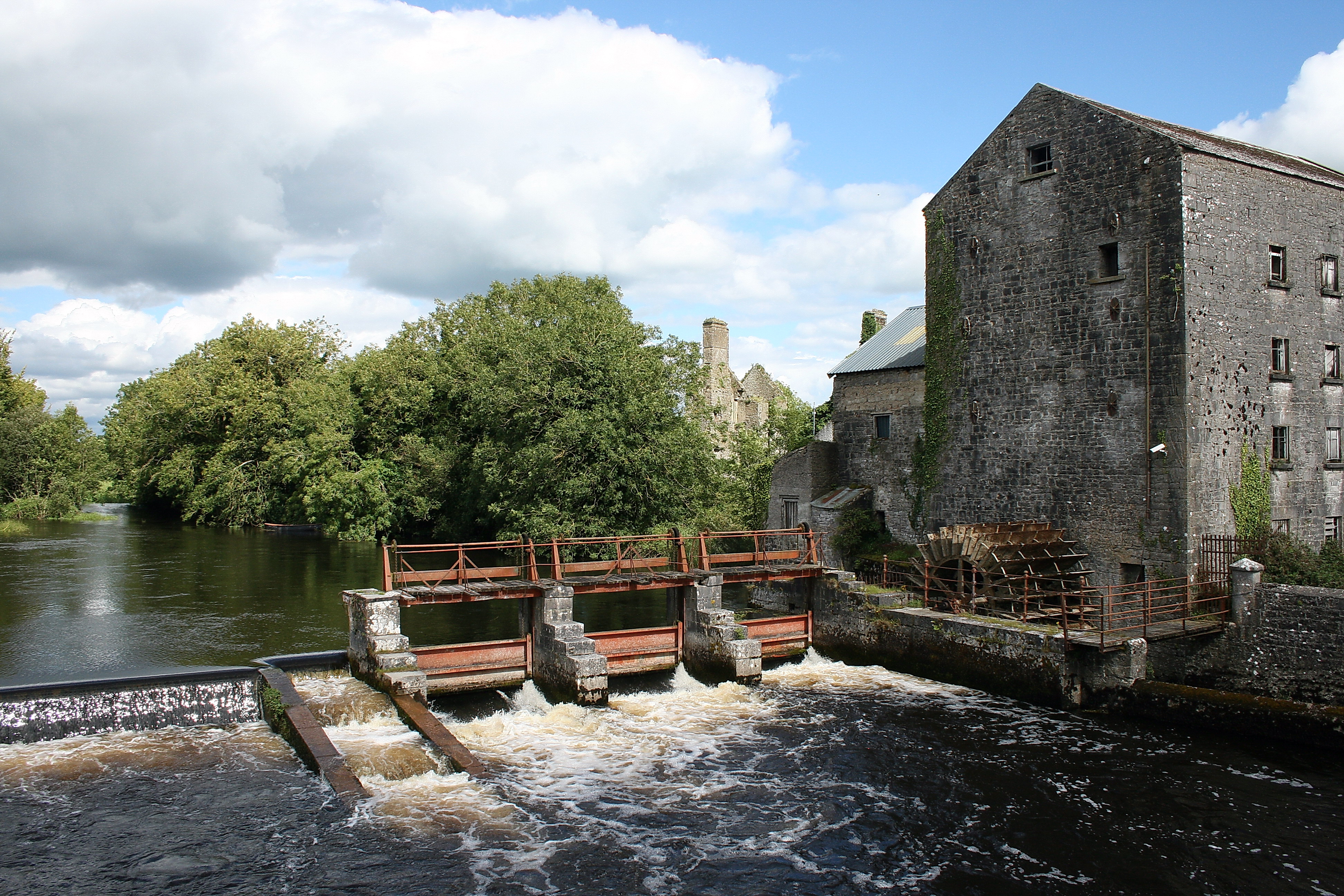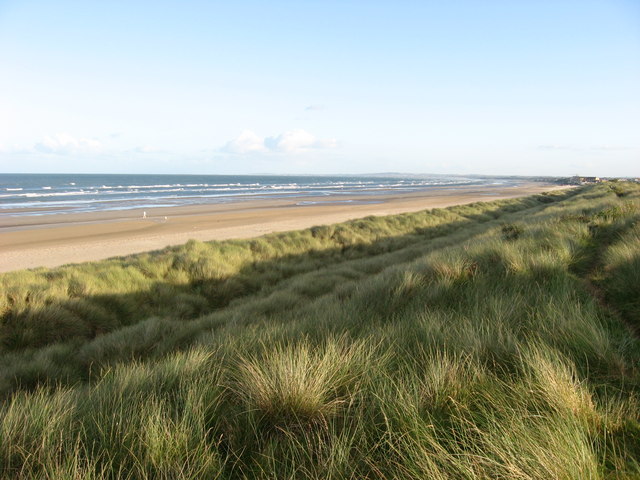|
Native Woodland Trust
The Native Woodland Trust is an Irish environmental non-governmental organisation established in 2000 with the aims of restoring and protecting Irish native woodland. The Trust is dedicated to protecting the remains of Ireland's ancient woodlands from further damage and destruction, letting them grow again, and the restoration of woodland across Ireland using native tree species. Governance The Trust's model is a voluntary board of trustees and small core staff with volunteers in local areas. The Trust is registered under 'Irish Woodland Trust' but trades as Native Woodland Trust. The Native Woodland Trust is a member of the Irish Environmental Network and thIrish Environmental Pillar The Trust is a membership organisation with a subscription magazine, ''WOODLAND''. Stated Aims and Principles The Trust's stated aims and principles are as follows: Aims * The protection, preservation and expansion of Ireland's existing ancient and semi-natural woodlands. * The creation of n ... [...More Info...] [...Related Items...] OR: [Wikipedia] [Google] [Baidu] |
Non-governmental Organization
A non-governmental organization (NGO) or non-governmental organisation (see American and British English spelling differences#-ise, -ize (-isation, -ization), spelling differences) is an organization that generally is formed independent from government. They are typically nonprofit organization, nonprofit entities, and many of them are active in humanitarianism or the social sciences; they can also include club (organization), clubs and voluntary association, associations that provide services to their members and others. Surveys indicate that NGOs have a high degree of public trust, which can make them a useful proxy for the concerns of society and stakeholders. However, NGOs can also be lobby groups for corporations, such as the World Economic Forum. NGOs are distinguished from International organization, international and intergovernmental organizations (''IOs'') in that the latter are more directly involved with sovereign states and their governments. The term as it is used ... [...More Info...] [...Related Items...] OR: [Wikipedia] [Google] [Baidu] |
Blessington Lakes
Poulaphouca Reservoir, officially Pollaphuca (), is an active reservoir (for both water supply and electricity generation) and area of wild bird conservation in west County Wicklow, Ireland named after the Poulaphouca waterfall on its south-western end where the water exits the lake. The lake is also commonly known as the Blessington Lakes, even though there is just one. It holds 166 billion litres (43.8 billion gallons, or 0.2 cubic km) and has a surface area 22.26 km2, making it the largest artificial reservoir in Ireland by capacity and surface area. It has a 44.3 km (27.5-mile) shoreline, and is 39.6 km (24.6 miles) from the sea. History It was created between 1937 and 1947, with flooding beginning at 10:00 on 3 March 1940 by damming the River Liffey at Poulaphouca as part of the Electricity Supply Board project to build a second hydroelectric station in Ireland, Ardnacrusha on the River Shannon being the first. The reservoir is one of two major sources o ... [...More Info...] [...Related Items...] OR: [Wikipedia] [Google] [Baidu] |
County Donegal
County Donegal ( ; ga, Contae Dhún na nGall) is a county of Ireland in the province of Ulster and in the Northern and Western Region. It is named after the town of Donegal in the south of the county. It has also been known as County Tyrconnell (), after the historic territory of the same name, on which it was based. Donegal County Council is the local council and Lifford the county town. The population was 166,321 at the 2022 census. Name County Donegal is named after the town of Donegal () in the south of the county. It has also been known by the alternative name County Tyrconnell, Tirconnell or Tirconaill (, meaning 'Land of Conall'). The latter was its official name between 1922 and 1927. This is in reference to the kingdom of Tír Chonaill and the earldom that succeeded it, which the county was based on. History County Donegal was the home of the once-mighty Clann Dálaigh, whose best-known branch was the Clann Ó Domhnaill, better known in English as the O ... [...More Info...] [...Related Items...] OR: [Wikipedia] [Google] [Baidu] |
Waterford
"Waterford remains the untaken city" , mapsize = 220px , pushpin_map = Ireland#Europe , pushpin_map_caption = Location within Ireland##Location within Europe , pushpin_relief = 1 , coordinates = , subdivision_type = Country , subdivision_name = Ireland , subdivision_type1 = Provinces of Ireland, Province , subdivision_name1 = Munster , subdivision_type2 = Regions of Ireland, Region , subdivision_name2 = Southern Region, Ireland, Southern , subdivision_type3 = Counties of Ireland, County , subdivision_name3 = County Waterford, Waterford , established_title = Founded , established_date = 914 , leader_title = Local government in the Republic of Ireland, Local authority , leader_name = Waterford City and County Council , leader_title2 = Mayor of Waterford , leader_name2 = Damien Geoghegan , leader_title3 ... [...More Info...] [...Related Items...] OR: [Wikipedia] [Google] [Baidu] |
River Suir
The River Suir ( ; ga, an tSiúr or ''Abhainn na Siúire'' ) is a river in Ireland that flows into the Atlantic Ocean through Waterford after a distance of . The catchment area of the Suir is 3,610 km2.South Eastern River Basin District Management System. Page 38 Its long term average flow rate is 76.9 cubic metres per second (m3/s), about twice the flow of either the (37.4 m3/s) or the River Nore (42.9 m3/s) before these join, but a little less than the Barrow's flow when it meets the Suir 2 ... [...More Info...] [...Related Items...] OR: [Wikipedia] [Google] [Baidu] |
County Roscommon
"Steadfast Irish heart" , image_map = Island of Ireland location map Roscommon.svg , subdivision_type = Country , subdivision_name = Ireland , subdivision_type1 = Province , subdivision_name1 = Connacht , subdivision_type2 = Region , subdivision_name2 = Northern and Western , seat_type = County town , seat = Roscommon , leader_title = Local authority , leader_name = County Council , leader_title2 = Dáil constituencies , leader_title3 = EP constituency , leader_name2 = Roscommon–Galway Sligo–Leitrim , leader_name3 = Midlands–North-West , area_total_km2 = 2548 , area_rank = 11th , area_footnotes = , population_total = 69,995 , population_density_km2 = auto , population_as_of = 2022 , population_footnotes = , population_rank = 26th , unemployment_rate = , blank_name_sec1 = Vehicle index ... [...More Info...] [...Related Items...] OR: [Wikipedia] [Google] [Baidu] |
County Offaly
County Offaly (; ga, Contae Uíbh Fhailí) is a county in Ireland. It is part of the Eastern and Midland Region and the province of Leinster. It is named after the ancient Kingdom of Uí Failghe. It was formerly known as King's County, in honour of Philip II of Spain. Offaly County Council is the local authority for the county. The county population was 82,668 at the 2022 census. Central Statistics Office figures Geography and political subdivisions Offaly is the 18th largest of Ireland's 32 counties by area and the 24th largest in terms of population. It is the fifth largest of Leinster's 12 counties by size and the 10th largest by population.Physical geography [...More Info...] [...Related Items...] OR: [Wikipedia] [Google] [Baidu] |
Slieve Bloom Mountains
The Slieve Bloom Mountains ( ga, Sliabh Bladhma; la, Bladinae montes) is a mountain range in Ireland. They rise from the central plain of Ireland to a height of 527 metres. While not very high, they are extensive by local standards. The highest points are Arderin (527 m) () at the southwestern end of the range and Baunreaghcong (511 m) at the end of the Ridge of Capard. The Slieve Bloom Mountains stretch from near Roscrea in the south west to Rosenallis in the north west forming a link between County Laois and County Offaly. Access to the mountains and the most popular attractions is easiest by taking Exit 18 off the M7 for Mountmellick and following the R422 for Rosenallis, Clonaslee, Cadamstown, and Kinnitty. There are 3 routes which cross the mountain. From Clonaslee here it is very easy to follow the mountain road over 'the Cut' towards Mountrath. From Kinnitty take the road from the centre of the village opposite the Catholic Church past Longford Church to Glendin ... [...More Info...] [...Related Items...] OR: [Wikipedia] [Google] [Baidu] |
County Meath
County Meath (; gle, Contae na Mí or simply ) is a county in the Eastern and Midland Region of Ireland, within the province of Leinster. It is bordered by Dublin to the southeast, Louth to the northeast, Kildare to the south, Offaly to the southwest, Westmeath to the west, Cavan to the northwest, and Monaghan to the north. To the east, Meath also borders the Irish Sea along a narrow strip between the rivers Boyne and Delvin, giving it the second shortest coastline of any county. Meath County Council is the local authority for the county. Meath is the 14th-largest of Ireland's 32 traditional counties by land area, and the 8th-most populous, with a total population of 220,296 according to the 2022 census. The county town and largest settlement in Meath is Navan, located in the centre of the county along the River Boyne. Other towns in the county include Trim, Kells, Laytown, Ashbourne, Dunboyne, Slane and Bettystown. Colloquially known as "The Royal County" ... [...More Info...] [...Related Items...] OR: [Wikipedia] [Google] [Baidu] |
Annamoe
Annamoe () is a village located on the Avonmore river in County Wicklow, Ireland about south of Dublin. It is on the R755 road (at the junction with the R763 road (Ireland), R763) between Roundwood and Laragh, County Wicklow, Laragh on the road to Glendalough. The small stone humpback bridge is a common place for tourists to stop and view the County Wicklow scenery. There is a trout Fish farming, fishery in the village with a lake where one can fly or bait fish. A separate fishing pond for children allows them to catch brown trout, brown and rainbow trout. Annamoe and the surrounding countryside is a breeding stronghold of the great spotted woodpecker, Ireland's newest species."Colonisation and breeding status of the Great Spotted Woodpecker in the Republic of Ireland" ''Irish Birds'' (2015) Volume 10 p.183 Castle Kevin, close to Annamoe, of which a few ruins survive, was a medieval fort which formed an important part of Dublin Dublin (; , or ) is the capital and l ... [...More Info...] [...Related Items...] OR: [Wikipedia] [Google] [Baidu] |
Laragh, County Wicklow
Laragh ( – meaning "the site, or ruins, of a building") is a small village in County Wicklow, Ireland. It lies at the junction of three roads (the R115, R755, and R756) through the Wicklow Mountains and is primarily known for its proximity to the monastic settlement of Glendalough. Sally Gap and the Glenmacnass Waterfall are to the north, to the west is Glendalough and the Wicklow Gap, and to the south is the Glenmalure Valley. The area is wooded, with the hills and mountains rising directly from the valley, and hill walkers, hikers, and other tourists sometimes use the village – given its closeness to Dublin – as their centre for recreational activities in the mountains. About 5 km from the village, on the Rathdrum road, the Clara Lara FunPark covers an area of some 40 ha. Birdwatchers come here to look for the great spotted woodpecker The great spotted woodpecker (''Dendrocopos major'') is a medium-sized woodpecker with pied black and white plumag ... [...More Info...] [...Related Items...] OR: [Wikipedia] [Google] [Baidu] |
Pond Humphreystown
A pond is an area filled with water, either natural or artificial, that is smaller than a lake. Defining them to be less than in area, less than deep, and with less than 30% emergent vegetation helps in distinguishing their ecology from that of lakes and wetlands.Clegg, J. (1986). Observer's Book of Pond Life. Frederick Warne, London Ponds can be created by a wide variety of natural processes (e.g. on floodplains as cutoff river channels, by glacial processes, by peatland formation, in coastal dune systems, by beavers), or they can simply be isolated depressions (such as a kettle hole, vernal pool, prairie pothole, or simply natural undulations in undrained land) filled by runoff, groundwater, or precipitation, or all three of these. They can be further divided into four zones: vegetation zone, open water, bottom mud and surface film. The size and depth of ponds often varies greatly with the time of year; many ponds are produced by spring flooding from rivers. Ponds may be f ... [...More Info...] [...Related Items...] OR: [Wikipedia] [Google] [Baidu] |








